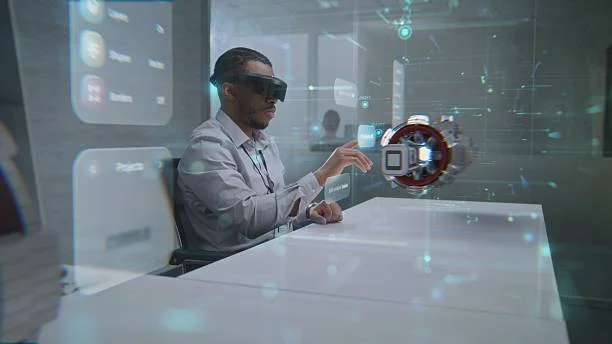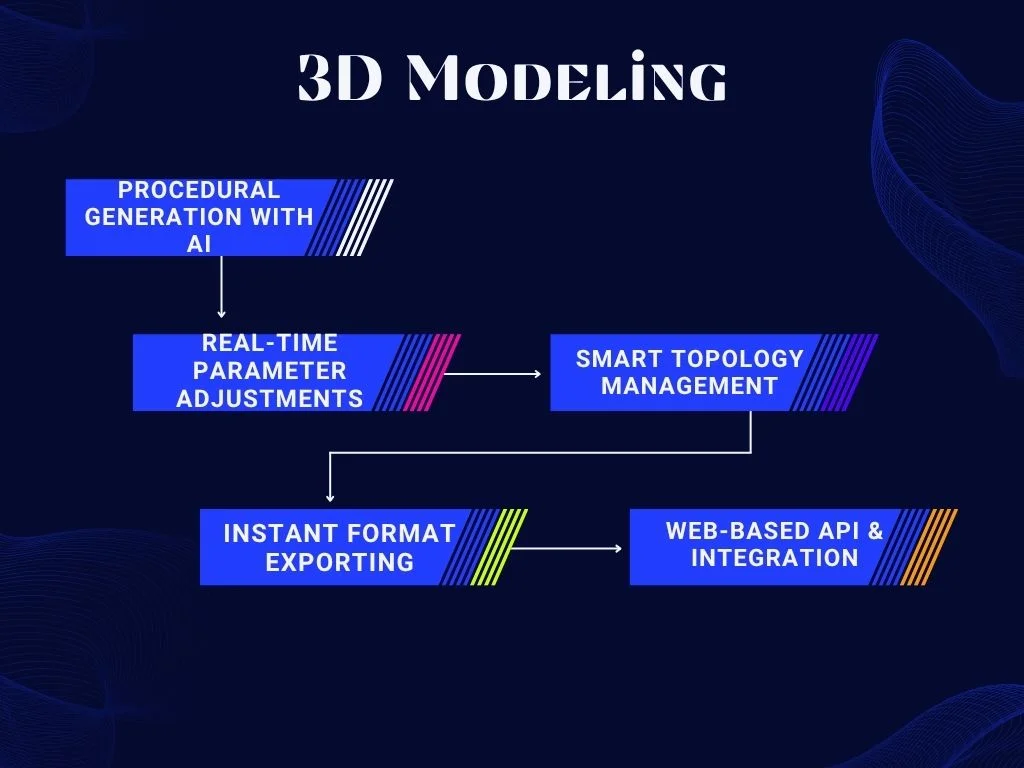How Sloyd AI Works: An Introduction to AI-Powered 3D Modeling Tools

In the ever-evolving world of 3D modeling, AI-powered tools like Sloyd AI are changing the way creators design, prototype, and visualize objects. Whether you’re a game developer, 3D artist, or someone just exploring the field, understanding how Sloyd AI works can help you streamline your creative process and achieve professional results faster.
Sloyd AI: Origins and Purpose

Sloyd AI is an AI-driven 3D modeling tool built to simplify asset creation. Developed with real-time workflows in mind, it blends procedural generation with machine learning to deliver customizable 3D assets instantly. Unlike traditional modeling software, Sloyd focuses on speed, creativity, and accessibility.
Key Features of Sloyd AI

1. Real-Time Model Generation
Sloyd AI lets you create 3D models instantly. As you adjust sliders or enter values, the model updates in real time. This means you can see changes happen immediately without waiting for rendering. It’s a major time-saver, especially for creators working under tight deadlines.
2. Custom Parameter Control
You don’t have to be an expert to fine-tune models. Sloyd AI gives you control through simple sliders and options. You can adjust things like height, width, shape complexity, and more. This flexibility allows you to design exactly what you need, whether it’s a futuristic vehicle or a rustic chair.
3. Export Options in Standard Formats (FBX, OBJ)
Sloyd AI supports the most commonly used 3D file formats like FBX and OBJ. This means you can easily import your models into popular software like Blender, Maya, Unity, or Unreal Engine. It ensures smooth integration into your existing workflows.
4. Web-Based and Plugin Integrations
There’s no need to download bulky software. Sloyd AI works right in your browser. Plus, it offers plugins for game engines and other 3D platforms. This allows designers to access powerful features without leaving their favorite design environments.
5. User-Friendly Interface for Non-Experts
Sloyd AI is built with simplicity in mind. You don’t need to be a 3D modeling expert to use it. The clean interface, helpful tooltips, and intuitive controls make it accessible for students, hobbyists, and professionals alike.
Use Cases in 3D Modeling

1. Video Game Asset Design
Game developers use Sloyd AI to build characters, props, vehicles, and environments quickly. It’s ideal for indie studios that need high-quality assets fast without hiring large teams of artists. AI helps them create consistent and stylized assets in record time.
2. Virtual and Augmented Reality Environments
VR and AR developers rely on lightweight and detailed 3D models. Sloyd AI produces optimized models that are perfect for immersive environments. Whether it’s a virtual showroom or an interactive museum, AI-generated models enhance the experience.
3. Architecture Visualization
Architects use Sloyd AI to create models of buildings, furniture, and layouts. Instead of drawing every piece from scratch, they can generate assets instantly. It speeds up the process of making client presentations and helps communicate design ideas clearly.
4. Educational 3D Demonstrations
Educators and content creators can use Sloyd AI to produce models for science, history, or engineering lessons. It makes abstract ideas more tangible and engaging for students. Plus, it allows for hands-on interaction in digital learning environments.
Core Concepts Behind AI‑Powered 3D Modeling

Procedural Modeling Basics
Sloyd AI utilizes procedural modeling, a method where complex models are generated from algorithms. Instead of drawing polygons manually, users adjust parameters like height, width, or symmetry to create instant variations.
Machine Learning & Neural Networks
Model Training
AI models within Sloyd are trained using massive datasets of 3D geometry. This allows the software to understand forms, patterns, and structure in ways that mimic human intuition.
Inference in Real Time
Once trained, the AI can generate and modify 3D shapes based on user input almost instantly. This real-time feedback is what makes Sloyd unique among modeling tools.
Data Preparation and Training Sets
To achieve quality outputs, Sloyd relies on well-curated datasets. These include:
- Real-world object scans
- Manually crafted assets
- Feedback loops from professional designers
How Sloyd AI Automates 3D Modeling

Sloyd AI automates 3D modeling by using AI-driven procedural generation and parameter-based editing, removing the need for traditional manual modeling. Here’s how the automation works step-by-step:
1. Procedural Generation with AI
Sloyd AI uses pre-trained algorithms that understand common geometry patterns. Instead of sculpting models from scratch, it lets you select a template (e.g., chair, sword, robot), and the AI instantly generates a base mesh with logical topology and proportions.
2. Real-Time Parameter Adjustments
Once a base model is generated, users can tweak sliders and input values (e.g., size, bevel, number of spikes, etc.). This parametric editing allows you to instantly reshape objects without redrawing them.
Example:
- Change a door’s width from 1.2m to 2.5m
- Add complexity to a sword blade by just moving a slider
3. Smart Topology Management
Sloyd AI keeps topology clean and optimized while you edit. This ensures that the model is:
- Game-ready
- Lightweight
- Exportable to engines like Unity or Unreal
4. Instant Format Exporting
Once you’re done, the model can be exported in standard formats like OBJ, FBX, or GLTF, all in a single click. This is especially useful for developers and game designers who need rapid asset deployment.
5. Web-Based API & Integration
Sloyd AI also offers an API for real-time generation, allowing studios to integrate it into their pipelines or apps. For example, a character generator in a game can use Sloyd to create different swords or helmets dynamically.
Sloyd AI automates the creation, customization, and export of 3D models using AI + procedural templates, empowering creators to build assets 10x faster than traditional methods.
Benefits of Using Sloyd AI
Speed and Efficiency
Create professional models in minutes rather than hours or days. Perfect for fast-paced game design cycles.
Creativity Enhancement
Experiment with shapes and forms that would be too time-consuming or complex to build manually.
Accessibility for Non‑Experts
No prior 3D modeling experience is required, making it ideal for hobbyists, students, or rapid prototyping.
Comparing Sloyd AI with Traditional 3D Modeling
Traditional vs. AI Workflows
| Feature | Traditional 3D Modeling | Sloyd AI |
| Skill Level | High | Beginner‑friendly |
| Time Required | Hours to days | Minutes |
| Tools Needed | Complex software | Browser or plugin |
| Customization | Manual | Parameter‑driven |
Common Challenges and AI Solutions
- Problem: Steep learning curve → Solution: Intuitive interfaces
- Problem: Time-consuming edits → Solution: Real-time generation
- Problem: Repetitive modeling tasks → Solution: AI variation tools
Game Engines and Rendering Tools
Sloyd AI integrates seamlessly with leading platforms such as:
- Unity
- Unreal Engine
- Blender
Plugin Support and APIs
Developers can extend Sloyd’s capabilities via APIs or use it as a plugin within their design environments, enabling dynamic asset pipelines.
Tips for Getting Started with Sloyd AI

Choosing the Right Input Parameters
Start with basic shapes and gradually increase complexity. Use tooltips and AI recommendations to learn ideal settings.
Iteration Strategies
Generate multiple versions with slight variations. Save presets for reuse or batch export them for comparison.
Common Pitfalls to Avoid
- Overcomplicating early models
- Ignoring file optimization
- Failing to test model compatibility with target platforms
Real‑World Examples and Case Studies
Indie Game Developers
Small teams use Sloyd AI to populate game worlds quickly with diverse, low-poly assets without hiring full-time modelers.
Architects and Interior Designers
Professionals generate fixtures, furniture, and structural elements rapidly for client presentations or VR walkthroughs.
3D Art and Animation Studios
Artists leverage Sloyd to prototype characters and props that can be refined further in traditional tools like Maya or ZBrush.
FAQs
1. What is Sloyd AI primarily used for?
Sloyd AI is designed for generating 3D models quickly, especially for gaming, AR/VR, and educational content.
2. Do I need programming skills to use Sloyd AI?
No coding skills are required. It’s built for users of all experience levels.
3. Can Sloyd AI export to industry-standard formats?
Yes, it supports formats like OBJ, FBX, and GLTF for compatibility with major 3D tools.
4. How realistic are the AI‑generated models?
They are visually accurate and customizable, but may need refinement for cinematic-quality applications.
5. What are the limitations of AI modeling tools?
AI tools can struggle with highly complex or abstract designs. They also rely heavily on input quality.
6. Is Sloyd AI suitable for professional pipelines?
Absolutely. It’s increasingly adopted in indie and AAA studios for rapid asset creation.
Conclusion
Sloyd AI is not just another 3D modeling tool it’s a revolutionary step in making high-quality 3D content accessible to everyone. With AI doing the heavy lifting, creators can focus on storytelling, design, and innovation. Whether you’re a beginner or a seasoned professional, tools like Sloyd AI offer speed, flexibility, and a glimpse into the future of digital design.






